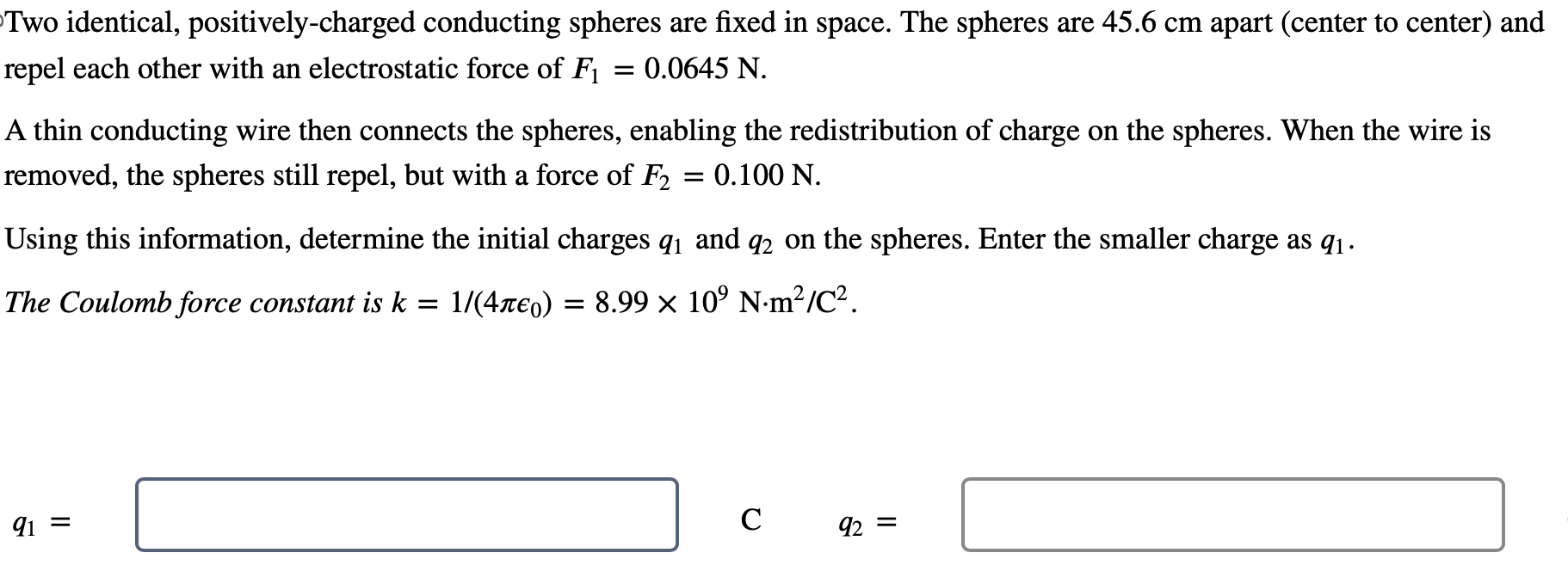Two identical, positively-charged conducting spheres are fixed in space. The spheres are 45.6 cm apart (center to center) and repel each other with an electrostatic force of F1 = 0.0645 N. A thin conducting wire then connects the spheres, enabling the redistribution of charge on the spheres. When the wire is removed, the spheres still repel, but with a force of F2 = 0.100 N. Using this information, determine the initial charges q1 and q2 on the spheres. Enter the smaller charge as q1. The Coulomb force constant is k = 1/(4πϵ0) = 8.99×109 N⋅m2/C2. q1 = C q2 =
